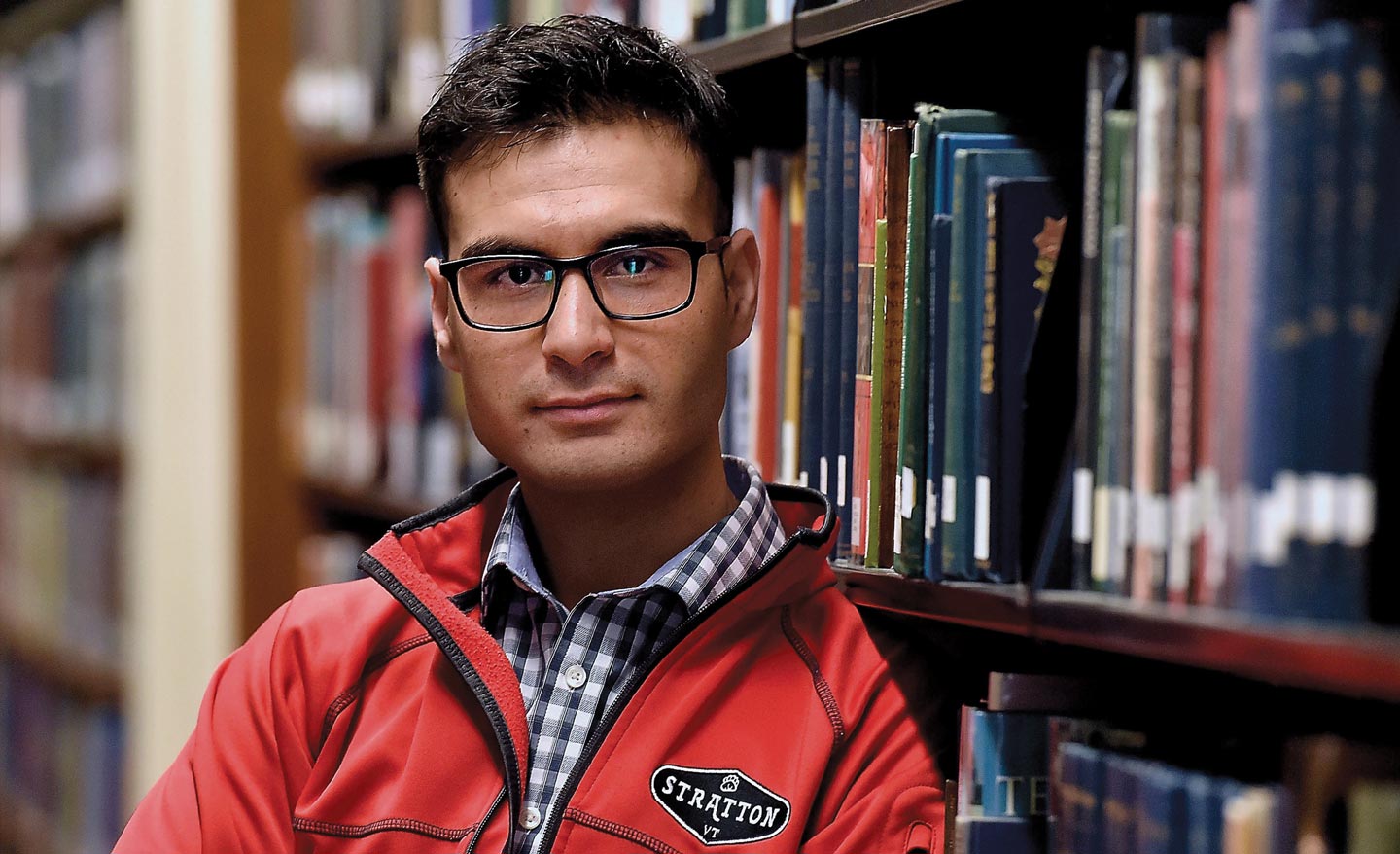Weaves His Own Story
Wali Hairan ’19 talks about the exhibit From Combat to Carpet: The Art of Afghan War Rugs.
Until he was 7, the only life Wali Hairan ’19 had ever known existed within the sweltering confines of a refugee camp in northwestern Pakistan. When he was less than a year old, Hairan’s family fled the Taliban in their native Afghanistan after their house was burned to the ground.
The family would remain in the Pakistani camp for more than six years, during which time Hairan would learn to weave, by hand, intricately crafted rugs that are prized around the world.
This spring, Hairan told his remarkable story to an audience at the Lyman Allyn Art Museum in New London as part of an exhibit titled From Combat to Carpet: The Art of Afghan War Rugs.
Hairan’s own rugs weren’t featured in the exhibit, but he spoke from vivid personal recollection of the harsh conditions those types of rugs are typically created in, and the shameful exploitation women and young children faced at the hands of an industry that would pay a few hundred dollars for the rugs, and sell them for thousands.
In an interview with The Day newspaper, Hairan explained that respiratory problems were common among the rug weavers, who were forced to constantly inhale the fine, brightly colored dust that coated the threads.
“I think every day pretty much felt like a whole year because of what it entailed and how hard it was,” he told The Day. “And once you were 5 years old, you were an adult. You had to participate in whatever capacity you could.”
In 2004, three years after the U.S. invasion of Afghanistan, Hairan and his family returned home. It was back in his home country where the trajectory of his life changed. Soon after returning to Afghanistan, he connected with Bruce and Dana Freyer, who run a nonprofit that assists farmers and addresses poverty in the country. The Freyers, impressed by Hairan’s insatiable curiosity, made sure he had an endless supply of books and provided close support when he went off to Jordan to attend the prestigious King’s Academy.
Hairan, who is studying computer science, neuroscience and Chinese, and may graduate a year early, said he was drawn to Conn when he learned he could design his own major, and the Freyers enthusiastically offered to contribute to his tuition costs.
“Without [the Freyers], my story is not a story,” he said.
